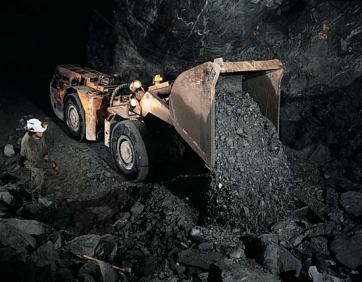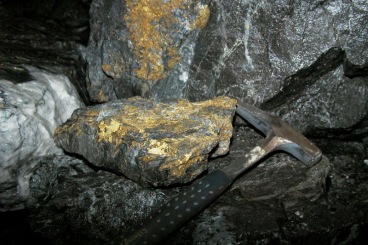Red Lake is located within one of the world’s most prolific gold camps,
located approximately 230 kilometres northwest of Dryden, Ontario.
Goldcorp’s active mining operations covers approximately 2,335 hectares
and is accessible by Highway 105, which heads north from the
Trans-Canada Highway. Daily commercial air services connect the numerous
local communities to both Thunder Bay and Winnipeg. Red Lake, Canada.
Located in one of the world’s most prolific gold districts, Red Lake is
one of Goldcorp’s top producers, yielding 414,400 ounces in 2014. The
High Grade Zone is the backbone of mining operations red lake , with an
average grade of more than two ounces of gold per tonne. Recent
investments in infrastructure and development have positioned this
renowned mine for many more years of long-term sustainable production.
Operations gold mining Red Lake and
gold mining process are situated in the eastern part of the Red Lake
Greenstone Belt in the Birch-Uchi Lake Subprovince of the Superior
Province, within the core of the Canadian Shield. The Balmer Assemblage,
which hosts the Red Lake Gold Mines, is part of the oldest sequence in
the belt, consisting of a highly deformed Mesoarchean tholeiitic
volcano-sedimentary complex, which locally plunges steeply to the
southwest. This folded volcanic package is in contact with the main
regional unconformity up against the Neoarchean sedimentary dominated
Bruce Channel Assemblage.
 All operations underground mining at Red Lake is carried out by using
three mining methods to maximum ore extraction: Overhand Cut and Fill
(OCF), Underhand Cut and Fill (UFC), and Long Hole (LH). The high-grade
zone mining operations red lake, which primarily consists of a narrow
vein system, is mined at the rate of 450 tonnes per day with an average
grade of over 45 grams per tonne (1.3 ounces per tonne). The high-grade
mineralization and complex geometry of the ore body require specialized
operations expertise.
All operations underground mining at Red Lake is carried out by using
three mining methods to maximum ore extraction: Overhand Cut and Fill
(OCF), Underhand Cut and Fill (UFC), and Long Hole (LH). The high-grade
zone mining operations red lake, which primarily consists of a narrow
vein system, is mined at the rate of 450 tonnes per day with an average
grade of over 45 grams per tonne (1.3 ounces per tonne). The high-grade
mineralization and complex geometry of the ore body require specialized
operations expertise.
Mineral ore types include silica replaced carbonate veins with free
milling gold, siliceous replacement-type mineralization (rich with
arsenopyrite) marginal to veins, broad disseminated sulphide
mineralization along major shears, and some minor sulphidized chemical
sediment-hosted ore.
 Innovative mining techniques and mining operations red lake have
improved efficiency, such as a wet shotcrete system, the use of larger
trucks, use of electric man carriers and a portable diamond drill
mounted on a jumbo carrier. Mining operations red lake is supported by
two mill processing facilities, providing a total milling capacity of
3,100 tonnes per day, including crushing, processing and pastefill
plants. The processing plant’s operations consist of grinding, gravity
concentrating, leaching, carbon-in-pulp (CIP), carbon elution and
reactivation, electrowinning, bullion smelting/refining and cyanide
destruction, flotation and concentrate handling—all of which are
required to recover the gold in Red Lake’s ore types.
Innovative mining techniques and mining operations red lake have
improved efficiency, such as a wet shotcrete system, the use of larger
trucks, use of electric man carriers and a portable diamond drill
mounted on a jumbo carrier. Mining operations red lake is supported by
two mill processing facilities, providing a total milling capacity of
3,100 tonnes per day, including crushing, processing and pastefill
plants. The processing plant’s operations consist of grinding, gravity
concentrating, leaching, carbon-in-pulp (CIP), carbon elution and
reactivation, electrowinning, bullion smelting/refining and cyanide
destruction, flotation and concentrate handling—all of which are
required to recover the gold in Red Lake’s ore types.
The Cochenour/Bruce Channel
deposit is key to plans for future consolidation. The work on enlarging
and upgrading the existing Cochenour shaft is nearly complete. The
development of a 6.0-kilometre haulage drift that will connect the
existing Red Lake underground infrastructure with Cochenour is ~90%
complete. The haulage drift will enable the efficient hauling of
Cochenour/Bruce Channel ore to the Campbell mine for processing at the
existing mill. The drift also opens up exploration of over six
kilometers of untested ground in one of the world’s richest gold
districts.
Exploration in 2015 will continue
to focus on the high-grade HG Young discovery. Rehabilitation of the
14-Level access in the Campbell Complex is completed underground
drilling has commenced and will continue throughout 2015. Exploration
drilling will also continue to focus on expansion of the R zone, NXT
zone and the High Grade Zone (HGZ) up-plunge and at depth.






